Exponent II's Blog, page 126
December 17, 2021
Guest Post: Rejecting the Cool Mormon Girl
Guest Post by Nicole Sbitani. Nicole is an adult convert, a woman of color, and a professional diplomat. She blogs at nandm.sbitani.com and writes microfiction @nsbitani on Twitter. The content of this post does not represent the views of the U.S. Department of State or any other U.S. Government agency, department, or entity. The thoughts and opinions expressed here are solely those of the author and in no way should be associated with the U.S. Government.

When I was in high school, I was introduced to the concept of the Cool Girl, now more commonly referred to especially by Gen Z as the pick me girl. Cool Girls or pick me girls suffer from internalized misogyny and seek to separate themselves from other girls, women, or gender minorities. The main (if sometimes subconscious) goal of the Cool Girl is to impress, attract, or fit in better with boys or men. As a result, Cool Girls engage in some stereotypically performative, masculine behaviors like burping and watching sports while carefully preserving aspects of femininity such as adhering to conventionally attractive beauty standards.
As an adult convert to the Church of Jesus Christ of Latter-day Saints, I also believe there is such an archetype as the Cool Mormon (a concept McKay Coppins mentions in his article in The Atlantic, titled “The Most American Religion”). Like the Cool Girl, the Cool Mormon is eager to please others and willing to change their own interests, personality, and behavior to earn others’ approval. For example, they may force themselves to laugh when others mock their sacred beliefs or to participate in social events involving excessive alcohol or drugs so as to avoid being called prude. At the other extreme, they may look down on others who do not live their lifestyle in order to appear more worthy to fellow members and create the impression that adhering to strict church-imposed standards is effortless – at least for them.
When these two concepts – the Cool Girl and the Cool Mormon – are combined, someone may feel pressure to conform to the intersectional image of a Cool Mormon Girl. I have felt that pressure myself and continuously aim to resist the tendency to contort myself into a Cool Mormon Girl ideal even when it makes me uncomfortable. Cool Mormon Girls are themselves full of contradictions, seeking in some contexts to distinguish themselves both from stereotypically sheltered, innocent Mormon girls and in other situations from stereotypically promiscuous, mainstream girls. The latter attitude is often exemplified in Sunday meetings and official church materials; see, for example, a 2008 New Era piece called “A Note to the Good Girls” written from a young man’s perspective that includes the lines: “I think it’s cool that you don’t dress like a lot of other girls. It is much more comfortable for us guys when a girl dresses modestly (and yes, girls who dress modestly are very attractive) and uses good language.”
If you are a woman and find yourself bragging that all of your friends are men because women and gender minorities “have too much drama going on,” then you might be a Cool Girl trying too hard to impress men. If you are a Mormon and find yourself bragging that you wouldn’t even know how to have fun at a party without alcohol because you’re “not like those Mountain West BYU grads,” then you might be a Cool Mormon trying too hard to impress non-members. If you are a Mormon woman and find yourself bragging that you’ve never even considered buying a bikini because you don’t want to “lower your standards to those of the world,” then you might be a Cool Mormon Girl trying too hard to impress Mormon men. Each of these expressions of identity do not exist in isolation but come at the expense of others.
A major wake-up call for me was having a higher-ranked, non-member coworker tell me, “You’re so great to have around. You’re not like other girls or Mormons who just can’t take a joke.” The truth was, that person had hurt me multiple times with their inappropriate humor, disrespect for women and my religion, and treatment of others. Instead of calling that person out on their behavior, I had decided I cared more about being the Cool Mormon Girl. Even as other women and people of my faith were marginalized by this person’s comments, I failed to speak up because I was too afraid of losing my own tenuous but higher status in the eyes of someone with more power and influence.
There are certainly individuals who themselves naturally fit closer to the profile of a Cool Mormon Girl. Perhaps their interests are simply more aligned with those stereotypically associated with a Cool Girl or their relationship with their religion situates them in a space commonly associated with Cool Mormons. What really sets Cool Mormon Girls apart, however, is not their own preferences but their conflicted relationship to their sense of self and the need to diminish others to appeal to a perceived audience. It is the choice to privilege the coveted external gaze at the expense of others that makes these archetypes worthy of rejection.
Mosiah 18:9 asks us to stand as “witnesses of God at all times and in all things, and in all places”, not just when it is “cool” or when others praise us for it. Moreover, the scriptures are full of countless examples of God declaring all children equal in divine worth and exhorting us to unity. Attempts to distinguish ourselves as individuals by putting down any other group, as Cool Mormon Girls do, are a sign of spiritual and emotional immaturity. We don’t need to generalize or mock others to assert our own values and preferences. On a larger scale, when everyone chases the approval of those in power then the whole community loses. So let’s reject the Cool Mormon Girl within us and do better.
December 16, 2021
In Memoriam: bell hooks
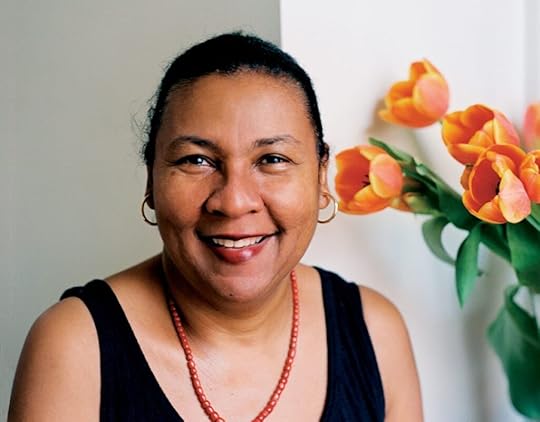 bell hooks, 1952-2021
bell hooks, 1952-2021bell hooks, largely regarded as the Mother of Black Feminism, died yesterday at the age of 69. We at The Exponent II feel it’s important to honor hooks and her contributions to feminism, academia, social justice, equality, culture, and the general world.
bell hooks was born Gloria Jean Watkins on September 25, 1952 in Hopkinsville, KY. Better known by her pen name, “bell hooks,” hooks is an author, professor, social activist, and feminist. Hooks’ academic career began in 1976 as an English professor at the University of Southern California. hooks is the author of many books including the critically acclaimed and the award winning Ain’t I a Woman: Black Women and Feminism, Feminist Theory: From Margin to Center, Feminism is for Everybody: Passionate Politics, and many more. hooks identified as “queer-pas-gay.” hooks was a professor at Stanford University, Yale University, Oberlin College and City College of New York. In 2004, she joined Berea College as Distinguished Professor in Residence and established the “bell hooks center.” In 2018 she was inducted in the Kentucky’s Writers Hall of Fame.
For more about hooks’ legacy please check out these beautifully written articles and tweets:
bell hooks, Renowned Author and Feminist Scholar, Dead At 69 by Ashley Reese for Jezebel
bell hooks, Pathbreaking Black Feminist, Dies at 69 by Clay Risen for The New York Times
How bell hooks got me through a tumultuous year of my life by Alice Driver for CNN
The world is a lesser place today without her by Linda Blackford for Lexington Herald Leader
The revolutionary writing of bell hooks by Hua Hsu for The New Yorker
Reaching for bell hooks in the Darkness by Brittney Cooper for The Cut
 @austinchanning
@austinchanning
 @BeeBabs
@BeeBabs
 @KimberlyNFoster and @CornelWest
@KimberlyNFoster and @CornelWest
 @LeslieMac
@LeslieMac
 @TheRaDR
@TheRaDR
 @nrookie
@nrookie
 @rgay
@rgay
 @Kishahowell3 @theferocity @biancaxunise
@Kishahowell3 @theferocity @biancaxunise
 @naomiedu
@naomiedu
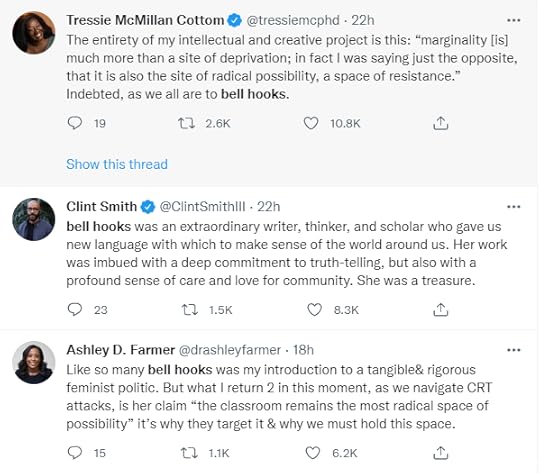 @tressiemcphd @ClintSmithIII @drashleyfarmer
@tressiemcphd @ClintSmithIII @drashleyfarmerRest in power, bell hooks

Last summer, I was the Ward Service Project
We had a great plan. Our local water Conservancy District was offering rebates for households that revamped their yards to be more water-friendly. We wanted to do our part to save water, especially during the severe drought affecting our part of the country. Less altruistically, we also wanted a nicer yard. We were in.
The Water Conservancy District gave us a whole year from the time we submitted our project plan to finish our yard and claim our rebate. We didn’t even write down the due date. There was no way it was going to take us all year. We were going to whip out this project and immediately claim our rebate so we could pay off any expenses we added to the credit card.
Hah. There was a pandemic going on. Getting supplies for the project was difficult, slow and expensive due to worldwide supply chain problems. Our plan included a sports court made from environmentally-friendly, porous tiles and a soccer turf made from used turf reclaimed from a professional soccer field (saved from the landfill!). But keeping factories open was tricky during a pandemic and sporting events were cancelled. We had a long wait before we got our supplies. And we greatly overestimated our ability as mere mortals to rapidly complete a major renovation project by ourselves while working our full-time jobs for longer-than-normal hours because we were simultaneously supervising our kids’ pandemic-imposed online schooling.
When at last our sport court tiles shipped, the courier somehow lost them. You heard that right. They lost a sports court. The thing was huge—big enough to fill three pickup trucks. How did it go missing? We had to get back in the queue and order again and by the time our tiles arrived, we were getting uncomfortably close to our deadline with the water Conservancy District. The project was expensive and we couldn’t afford it without that rebate. We had to make that deadline.
My husband and I worked hard—perhaps a little too hard for our middle-aged bodies. One day, after apparently coming out unscathed from many hours of hard labor in our yard, my husband injured his back while bending over to brush his teeth. Two days away, we had scheduled a bobcat rental to level the yard for our new sports court and soccer turf. We would have to cancel. I couldn’t do it by myself. My husband would most likely be out of commission until after the deadline for the rebate was past. We wouldn’t make it.
On the way back from the emergency room, we stopped at the pharmacy to pick up pain meds. I saw one of my neighbors there. He said, “How’s it going?” He didn’t know it was a loaded question.
I told him all about my husband and the freak tooth-brushing accident. I told him about our yard and the rebate we would not be able to claim.
I had forgotten that my neighbor was also the Elders Quorum President of our local Church of Jesus Christ of Latter-day Saints (LDS) congregation. He called the next day and told us that the Elders Quorum would like to help us finish our yard as a service project. I was thrilled.
But as always, we had underestimated the scope of the project. The Elders Quorum couldn’t finish it in one day. So they came again. And again. And other neighbors and Ward members came, too. Even the pre-teen Activity Days kids showed up and did some of the more lightweight labor.
I was grateful. And also embarrassed. Too much service was being directed towards me, an able-bodied person who hadn’t had a death in the family and wasn’t in poverty. I wasn’t needy; no one needs a yard with a sports court.
Maybe so much service for my husband could be justified on the principle that what goes around comes around. He’s always the first to show up to help a neighbor move or build their shed or fix their plumbing. Most of my volunteer time is dedicated to the Mormon feminist movement, which I consider to be infinitely valuable with potential to yield great returns for all Church members and everyone who interacts with them, but most of my religiously conservative Ward members probably wouldn’t feel the same way. And I confess that I am not the most awesome when it comes to bringing meals and loading moving trucks. I do not deserve my neighbors’ service.
But charity, the pure love of Christ, is not stingy. We give according to people’s needs and wants. And the pure love of Christ is not limited to the narrow confines of what people actually deserve.
I felt the love of Christ through the selfless efforts of my neighbors and co-parishioners as they helped me finish my overly ambitious and poorly planned project. I still feel it, when I look out the window into my lovely, water-friendly yard.
Thank you.
 My new yard. The light green area toward the back is our new sports court.
My new yard. The light green area toward the back is our new sports court.
December 15, 2021
December 14, 2021
Reconstructing Faith Blog Series: Call for Submissions
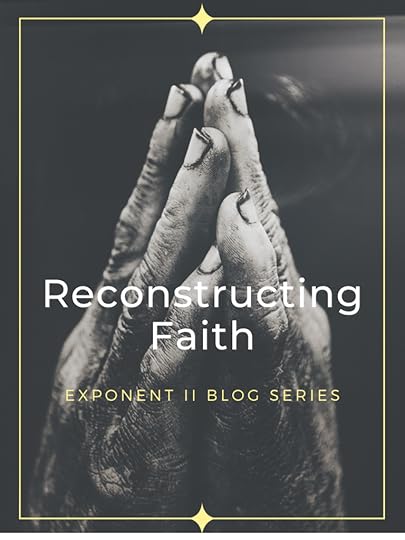
For some members of the Church of Jesus Christ of Latter-day Saints, a faith crisis transforms them and their perspective, but they stay actively engaged in the Church. For others, a faith crisis leads them on a different path, and reconstructing faith may include a new faith community or an independent spirituality.
We would like to hear the stories of reconstructing faith from women and gender minorities across the Mormon continuum. With respect for all spiritual journeys, if you have gone through a faith/certainty crisis and have made efforts to re-build your faith, what has that looked like? Have you had a lusterware moment where old beliefs shattered, helping you identify beliefs of greater personal value? What has sparked your spiritual curiosity? What new traditions have you explored? Have any teachers or resources helped you? What old traditions or texts have become dear to you in new ways? What have you had to let go of in order to make space for new growth?
For this series, you can submit a guest post here for full posts (typically between 600-1200 words). You can also submit a shorter response focusing on one aspect of reconstructing faith (under 300 words) to be published alongside other snippets. Email snippets to Katie Rich at KatieOnTheBlog at gmail dot com. Include your real name, the name you would like to use on the blog, and a brief (1-2 sentence) bio. Please submit by February 14, 2022, to participate in the launch of this series.
After My Faith Shattered
If I had to choose a single day that was most jarring for my faith journey, it would be going through the temple for the first time at age twenty. So many ideas that I had about the Church of Jesus Christ of Latter-day Saints, its leaders, and its doctrines fell and shattered on the floor that day. But I was getting married a few days later and felt I had no choice but to sweep up the shards of my faith, put them back up on the shelf, and hope no one would notice.

For years, I tried and failed to rebuild my faith as it had been. Just-Try-Harder-Glue didn’t work. Look-And-Talk-Like-A-Perfect-Mormon tape couldn’t fix anything. Internalized-Shame-And-Judgement tacks both hurt and failed. It became clear that I couldn’t go back, but I was afraid of moving forward. I knew there would be costs to openly acknowledging my shift in belief and in living and speaking according to my values. I feared a loss of belonging and community. I feared the loss of my marriage and extended family relationships. It was an intensely lonely time.
It is easy to find messages within the Church that shame people for having doubts or questions. I deeply internalized a sense of needing to be a good member missionary—that I was responsible for how other people felt about the Church and therefore, in some way, for their eternal salvation. It was a heavy burden. But one of the early messages that made me think that maybe I was not inherently broken was Laurel Thatcher Ulrich’s essay “Lusterware.” I first heard about it from a good friend who was willing to sit and talk with me during my faith crisis, and then I read the version included in Mormon Feminism.

Ulrich, a Pulitzer Prize-winning historian and co-founder of Exponent II, writes about how at a time when silver dishware was common, so was lusterware, a ceramic ware painted with a gold or platinum film. Lusterware was shiny, but unlike real silver, it was also fragile and could easily shatter if dropped. Only someone very inexperienced would examine lusterware and confuse it for the real thing, but on the shelves of our minds, it can be harder to identify falsehoods until they are tested. “All of us have lusterware as well as silver on that shelf we keep at the top of our minds. . . A lusterware image fulfills our need for an ideal without demanding a great deal from us. There are lusterware missions and marriages, lusterware friendships, lusterware histories, and yes, lusterware visions of ourselves. Most of these will be tested at some point on the stones at the bottom of our minds.”
Ulrich’s essay made me think that not only was it normal and natural to have parts of my faith shatter, but that it was essential for my growth. Identifying lusterware can be helpful in distinguishing it from the silver, which is more valuable and durable and worth polishing with care.
But even with a growing confidence that I was not broken even if my trust in the Church had broken, I was not wrong about the loss of belonging and community that accompanied being more outspoken about my beliefs and values. It was a painful time that often felt like a spiritual wilderness. Those years in the wilderness were also transformative. Over time, I wasn’t merely constantly stepping over broken shards, but my spirit was delighting in new ideas as well as old ideas made new.

In this wilderness, I turned again and again to the voice of Rachel Held Evans. I first read her book Searching For Sunday, where I saw so many of my own questions, fears, and doubts reflected in her story of leaving her Evangelical faith and exploring new paths of Christianity (on the days that she believes, that is). In her book Inspired: Slaying Giants, Walking on Water, and Loving the Bible Again, I met a God who wanted me to wrestle with scripture and faith. One who did not insist that “obedience with exactness” was the only way to God’s power and love. Rachel introduced me to a Jesus who invited all of the misfits to the table and offered sustenance and rest, not shame. She helped me see a God who was bigger than any single tradition.
Rachel Held Evans died on May 4, 2019, after a brief and sudden illness. I, like so many who loved her words, was devastated. It was with both gratitude and sadness that I recently listened to Wholehearted Faith, the book she was working on before she died that her friend Jeff Chu completed. On the days that I believe, I often think of Rachel’s words: “I am a Christian because the story of Jesus is the story I’m willing to risk being wrong about.” The story of Jesus is one that still leads me towards love, so even in my imperfect and often heretical faith, the story of Jesus still feels like home.
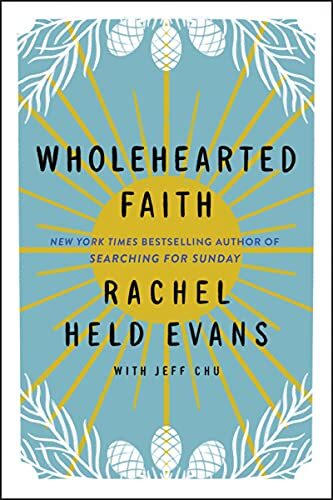
This is not to say that I don’t spend time in the mud fighting out differences in belief or practice with friends, family, or strangers on the internet. My path has not been without significant trauma, and that trauma absolutely shows up in my relationships. I have lost friends and some community along the way, but not in all the ways that I feared. My marriage has held. Some friendships have ended, but others have become deeper. I’m still figuring out how to engage with my neighbors and acquaintances as my authentic self, but some of that is also due to having moved shortly before the start of the pandemic. Whether related to issues of faith, politics, or any number of other reasons, I know I’m not alone in figuring out how to rebuild community after 2020.
After years of deconstructing my faith—examining my assumptions and seeking new understanding—reconstructing my faith has been slow and eclectic. But it has been empowering to believe I can be intentional about my own spiritual formation. I get to learn new ways of seeking and understanding Jesus, new ways of seeking the feminine divine, and have an open curiosity about traditions beyond the one to which I was born. If an idea or practice helps me better love myself and my fellow humans, that’s the stuff that I want to polish, hold on to, and pass on to my children.
****
I would love to hear your story of rebuilding faith after a crisis of faith or certainty. Check back this afternoon for a call for submissions on a new blog series, Rebuilding Faith.
December 12, 2021
Marriage Pressure Is NOT Of The Spirit
I had been in the church less than a year when an elder inquired whether I was serious about getting married.
I joined the church five years ago with all the excitement in the world as I sought to learn more about the restored gospel. In those early days, I devoured the scriptures and took part in every activity the church had to offer. The excitement of being a new convert and the gospel was as powerful as any hallucinogenic drug in those times as I sought to show the entire branch how “good” of a convert I could be.
Before joining the church, I had already made up my mind that I didn’t see marriage as some grand pinnacle of happiness in my life. I had been raised partially by a single grandmother who had achieved more than most married women. I had seen the fight and determination of a woman who had stepped into her own power and had charted a path for herself without a man.
As an only child whose parents worked long hours, I was used to being alone with my own company. I was used to the loneliness and craved it as I struggled to make friends. I had seen how much I had grown by just believing in myself without an audience of supporters. And after a string of relationships that lead to more heartbreak than one human should endure in this lifetime or the next, I firmly decided that I would NOT get married.
Instead, I focused on travel. I wanted to visit all the places I had seen on television. I wanted to write in new places and to chart my own path where I could be free to choose the things which made me happiest in life. And at twenty-four years old, I had already inquired about IVF treatment to one day bring life into the world.
I recognized early that my individual path would never mesh with the spiritual one I had undertaken at baptism. There would be no one to cheer me on for being blissfully happy as I enjoyed my singleness and charted my own path in life. As I soon found out, my happiness had to involve a man and 6.5 babies.
I tried to surround myself with service, drowning the loud opinions of my single state from my brain as I poured myself into being more involved. Still, I was often told that I would never be fully happy unless I was married, and the matchmaking efforts began.
Elders began inquiring more about the type of man I would be interested in and before heading on a Young Singles Adult temple trip in 2018, I was instructed that I needed to come home with a husband. I was told that without this, I wouldn’t be a complete person.
It didn’t matter to most that I was still grieving the loss of my grandmother earlier that year. It didn’t matter that I suddenly lost one of the most important people in my life. All that mattered was that I needed to get married…and I needed to get married now.
I returned home without a husband twice that year. Even when I ran away from home to remove myself from thinking about my grandmother’s death and flew to Idaho, I was sent messages from leaders that I needed to work hard to secure time and all eternity.
 Before joining the church, I had never been overly concerned with marriage.
Before joining the church, I had never been overly concerned with marriage.I wanted to travel the world. As a member, I was constantly reminded of my singleness.
Why wouldn’t they let me fly free unless it fit their own agenda?
To them, I was a broken vessel that could only be fixed by running off to the temple to be sealed to a perfect stranger.
Even when I moved to another branch the same pattern continued. I sat in places where I felt uncomfortable as I was taunted for being ugly, for being too loud and too chatty. I was told that nobody would ever want to marry me.
These things replay in my mind even now as I write this as I try my hardest to swat away the tears from falling all over my keyboard. To be told that something is wrong with you for not wanting what people want in the way they have gotten it is a constant scar in my membership.
To be constantly told and to be constantly bullied, and reminded of my singleness continues the dangerous narrative that something must be wrong with me.
In the years since joining the church, my opinions on marriage have changed dramatically. I believe more strongly in love and in the concept of finding my forever person. But for me, it has to be RIGHT. It can’t be convenient or entered just for the sake of keeping up appearances and so I can run off with the first person who says the “l word”.
As someone with a chronic illness, it’s that much harder to find that person. Love will not be enough to secure time and all eternity as anyone entering my life has to deal with the challenges of having an immune-suppressed partner.
I believed that due to my huge baggage meant I had to settle for mediocrity and abuse. At the end of last year and at the beginning of this one, I fell down into a dangerous trap of getting involved with someone who I knew would never bring me happiness in this lifetime or the next. The exchanges were abusive as I paid for a previous partner’s indiscretions. I was told horrible things that stick with me to this day and that ruin my confidence to even get back into the LDS dating pool.
I endured because I figured that was what good LDS women did. They endured. They fought to stick around so they wouldn’t feel so alone. Nobody wants to be returned to the shelf or to be the left-behind woman.
 Maybe the lesson here is that we teach women that we can fly
Maybe the lesson here is that we teach women that we can fly without seeing marriage as the vital stamp we must get
in our passport of life at a certain age. And that when we do choose marriage… that we choose it well.
I’ve realized how damaging this is. I’d rather now be alone with a puppy and a goldfish, getting drunk on apple cider in a corner than to believe that love is supposed to be abusive or painful or as some plight of revenge.
Hearing this, most would think I had the male species. I don’t.
I see love for what it is.
I see it as beautiful and sacred.
I see it not to be messed with or uttered carelessly or mindlessly entered into just so one can enjoy the physical perks it brings.
I’m still not sure love is for me. But what I do know is that I won’t be pressured into it or forced into settling for less than what I deserve simply so I will have something in common with my girlfriends. I won’t be pressured into marriage so that my value as a member increases.
For now, it means sitting on the shelf, watching life go by as I recognize my value and the things I deserve.
Love…shmove. Either way, I’m happy just being me.
December 6, 2021
The Glory of God is Intelligence
This blog post is adapted from a talk I gave in another ward in my stake in late August. I never write my talks out word for word, preferring to speak extemporaneously from an outline, so I’m using my outline to create the post.
One story in the New Testament that stands out to me is the story of Mary [1] anointing Jesus while He sat at dinner. Jesus was dining, and Mary came and poured expensive oil on Jesus’s head (or feet, in other accounts). The disciples criticized her, saying that it was wasteful and that the oil could have been sold instead. Jesus defended Mary, said she had done a good thing, and then said “Verily I say unto you, Wheresoever this gospel shall be preached in the whole world, there shall also this, that this woman hath done, be told for a memorial of her.” [2]
What was so important about what Mary did that Jesus said her story should be shared wherever the gospel is preached? There are many things, but one thing that stands out is that Mary glorified God with her actions. We likewise are to glorify God, though we can’t do that by pouring oil on Jesus’s head at dinner.
 Mary holding a container of oil. Image credit Jan van Scorel. Public Domain
Mary holding a container of oil. Image credit Jan van Scorel. Public DomainThere are many ways to glorify God, but one of them is by seeking light and truth. We’re taught in the Doctrine and Covenants that “[t]he glory of God is intelligence, or, in other words, light and truth. Light and truth forsake that evil one.” [3]
I attended a Jesuit university, and their motto was inscribed on every building. Ad majorem, Dei gloriam. To the greater glory of God. What struck me was that it wasn’t just the chapel or the theology building that was dedicated to God’s glory. The biology lab, the economics building, the engineering halls all said it, too. God was glorified just as much in learning about physics as in learning about prayer.
God is all-knowing, and if we want to become like God, we need to learn as well. While formal education is one way to learn truth, it is not the only way.
I. What is truth?
This question has occupied philosophers and theologians for millennia, and it won’t be answered in a single blog post. However, the scriptures provide a working definition sufficient for today’s purposes. “And truth is knowledge of things as they are, and as they were, and as they are to come.” [4] Further, we’re told that we should learn “things both in heaven and in the earth, and under the earth; things which have been, things which are, things which must shortly come to pass; things which are at home, things which are abroad; the wars and the perplexities of the nations, and the judgments which are on the land; and a knowledge also of countries and of kingdoms.” [5] This is a broad mandate, and it is the work of a lifetime.
There are three important characteristics of truth: (A) Truth exists, but we need to be open to the possibility that our understanding is limited; (B) Some truths comfort, and some truths make us uncomfortable; (C) God is not threatened by a search for truth.
A. Truth exists, but we need to be open to the possibility that our understanding is limited
For we know in part, and we prophesy in part. But when that which is perfect is come, then that which is in part shall be done away. When I was a child, I spake as a child, I understood as a child, I thought as a child: but when I became a man, I put away childish things. For now we see through a glass, darkly; but then face to face: now I know in part; but then shall I know even as also I am known.
1 Corinthians 13:9-12
When I was in kindergarten, one week at school I learned that humans are a kind of animal. The next week, I learned about owls and their habits. The teacher said that owls hunt their prey by swooping down out of the sky and carrying off small animals to eat. I was the smallest child in my class. I reasoned that since I was human, I was an animal. I further reasoned that since I was small, I was a small animal. I became afraid of owls, assuming that as a small animal, I was in danger of being carried away to become dinner.
My reasoning was impeccable, but I lacked the knowledge that the term “small animal” referred to things like mice and squirrels, not human children. As I learned more, I revised my understanding and came closer to the truth. Every time we draw closer to the truth, we further glorify God.
B. Some truths comfort, and some truths make us uncomfortable
Some truths can be incredibly comforting – the knowledge that God loves us and takes a personal interest in our lives, the knowledge that we will be reunited with our departed loved ones, the knowledge that through the atonement our suffering can be healed and we can be made whole. And some truths can disquiet us. Often in the church, we have a tendency to shy away from anything that makes us uncomfortable, attributing the discomfort to a lack of the Spirit and therefore to falsity. However, there are times when truth should make us uncomfortable because that discomfort moves us to action.
When we are confronted with our own sins, that’s an unpleasant feeling. Nobody likes to be told that they’re doing something wrong, but without facing that uncomfortable truth, we won’t be moved to change. Also, when we hear about suffering in the world, we should feel discomfort about it. Feeling uncomfortable about bad things happening in the world is the first step toward taking action to relieve the suffering of others. This discomfort comes from the Holy Spirit to motivate us toward change.
C. God is not threatened by a search for truth.
Some people attribute questions to a lack of faith. Questions are indicative of great faith, however. They show that we’re taking things seriously enough to think deeply about them and seek greater understanding. We’re taught in the scriptures to become as a little child. One thing that children do is constantly ask “Why?” and when they get an answer, they question that answer with “Why?” on and on and on. It’s how they learn. It’s how we learn, too. God’s truths are strong enough to withstand a series of questions.
II. How do we seek truth?
And set in order the churches, and study and learn, and become acquainted with all good books, and with languages, tongues, and people.
Doctrine and Covenants 90:15
We have a whole world of knowledge at our fingertips to study. If I want to learn any skill that I don’t know, someone has written a book or made a YouTube video about it. We also learn truth from experience, both ours and others’. And lastly, we learn truth by revelation. The Holy Spirit can speak truth to our minds and our hearts.
Sometimes these methods work together. When I was in college, I was taking an astronomy class. We were learning about the age of the universe and the age of the earth. I had read the textbook (study) and participated in the laboratory (experience). While I was sitting in the lecture one day, we were going over the material. The professor reiterated what the textbook said – that the universe and the earth were billions of years old. In the middle of the lecture, the Holy Spirit witnessed to me the truth of that statement. (revelation)
The search for truth will take a lifetime and even extend into eternity, but as we undertake this search anew each day, we bring glory to God, just like Mary did when she anointed the head of our Savior with precious oil.
————–
[1] Which Mary isn’t specified in the text, though since the account in John states that it happened in Bethany, in Lazarus’s house while Martha was serving dinner, I think it’s likely that the Mary in question is Mary of Bethany, Martha’s and Lazarus’s sister, though many people instead believe the person in question is Mary Magdalene.[2] Matthew 26:13
[3] Doctrine and Covenants 93:36-37
[4] Doctrine and Covenants 93:24
[5] Doctrine and Covenants 88:79
November 29, 2021
Guest Post: Why Heavenly Mother is Essential: Part 7
Guest Post by McArthur Krishna, McArthur comes from a pack of storytellers. And while the pack rightly insists she’s only in the running for third-best storyteller on a good day, she’s made her living in stories. Stories in words and visual art that inspire, demand, encourage and cajole us along this wild ride of life. If you know her, she will unabashedly tell your stories too (with some degree of truthiness). Look out.
This is the last of a seven-part series about why Heavenly Mother is essential.
Part 1, Part 2, Part 3, Part 4, Part 5, Part 6
Essential Fact #1: Heavenly Mother is essential to the definition of GodThe Old Testament was written in Hebrew. In that language, one of the words for God is Elohim— a plural term. Elohim is used over 2500 times the Old Testament— however, not all of those are references to Heavenly Mother. But Genesis seems clear— We are taught that we are made in Their image, both male and female. The plural and the gender being both male and female indicates that the Gods are both.
This matters.
Heavenly Father and Heavenly Mother are God together. It is the union of the two that creates God.
“No matter to what heights he has attained or may attain, he does not stand alone; for see by side with him, in all her glory, a glory like unto his own, stands a companion, the Mother…”
Elder Melvin J. Ballard
“We are informed that it required the male and female, united to make one image of [God’s] own body…”
Elder Franklin D. Richards
And while I think is is vital to underscore the essential nature of Heavenly Mother, I do not want to hurt my LGBTQ+ brothers and sisters with this quote. With that in mind, I dug in to ask people who have thought more about this topic from their respective angle.
I called Tom Christofferson, who kindly gave me his wisdom.
“My experience in this life is that I don’t desire the male-female union that has given so much joy and meaning to the lives of most of the people around me, and among those I love are they who experience all genders/no gender. That doesn’t mean I discount or devalue woman-man union: I am its product, both Heavenly and earthly. I rejoice that most of my Heavenly siblings have a sense of a next life that fills them with peace and gratitude. The Spirit whispers to my soul that I, and all of my LGBTQ siblings, have an honored place in the family of Heaven and that the perfect love Heavenly Parents feel for each of their children will also be the quality of love we will feel for each other. I hope to know more; for now, that beautiful image is sufficient.”
Jennifer Finlayson-Fife works on helping couples become healthier. She had these thoughts
“The divine model is a balance of masculine and feminine…and couplehood is divine…but how that plays out in the eternities is still unknown to us.”
To me, this makes sense. My husband and I each have a spectrum of masculine and feminine energy and balancing those creates harmony. Pre-marriage we were on the edge of deciding whether or not to move ahead in our relationship. We set out to go hiking in Sedona and someone (we think of him as perhaps one of the Three Nephites but for sure an angelic presence in a gold convertible) warned us the hike we had picked out was very masculine energy. We chose a different hike. Now, do I know Sedona vortex energies are real? No. No idea. But I do know that we were already in a fight and adding anymore aggressive energy to that would have been a disastrous doozy.
We have been taught that gender is eternal — but we don’t know much beyond that. How this works, I don’t pretend to understand. I just want to be clear that we all have a Mother in Heaven and that somehow union creates divinity. As Bethany, my co-author says, “Expanding from only a male god to both male and female is moving a more expansive definition of God. That can only be good.” Increased representation is GOOD.
When I consider this earth life, I think of infinite pie. (Specifically, strawberry rhubarb with a great crust, if you wondered.) This is not the pie that says more divinity for some is less divinity for others. I just have to remember that excluding the feminine does not solve all theological problems with a LGBTQ+ community. And, we all benefit from expansiveness— while understanding that there is also trickiness. I don’t know the answers, but I want to be clear I support the questions.
Additionally, if we think of Heavenly Mother as essential… that means that the supreme power of the universe is not just one entity. To me, this makes divinity a much more powerful concept. While our Heavenly Parents are united, They are (quite obviously) not the same.
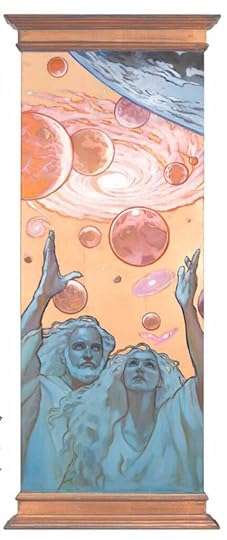 Rose Datoc Dall, “Worlds Without Number”
Rose Datoc Dall, “Worlds Without Number”Sameness is not divinity. Unity is divinity.
Now, what becomes interesting to me is what I do with this knowledge.
In General Conference October 2021, Elder Renlund’s expressed this:
“Do you think that the people were unified because they were all the same, or because they had no differences of opinion? I doubt it. Instead, contention and enmity disappeared because they placed their discipleship of the Savior above all else. Their differences paled in comparison to their shared love of the Savior, and they were united as “heirs to the kingdom of God.”
How does this apply to our lives? There are obvious applications to married life. But I also think it has a more universal application which is applicable to all regardless of marital status or gender.
Recently I have been thinking about loving the other and what it means to be a united people. United in our families, our church, our country our world. This is not an exercise in nicety. Christ was clear: “I say unto you, be one; and if ye are not one ye are not mine,” D&C 38:27. To read more on this, you can see my LDS Women Project post “Loving the Other”.
What does being united look like? What does it feel like? How do we get there? These are more questions I think are worth considering. However, one of the key take-away lessons from understanding that Heavenly Mother is essential is that Her existence demonstrates how two opposites can work united and create GLORY.
We are Their work and Their glory.
Let us all work to find divinity in being united and thank our Heavenly Mother and Heavenly Father for illustrating this powerful way.
November 28, 2021
Sacred Music Sunday: Lo, How a Rose E’er Blooming (reprint with new arrangement)
This post originally appeared in December 2018 and is being reprinted today with a different arrangement of the hymn.
 Black and white picture of hands holding the blossom of a red rose. Public Domain.
Black and white picture of hands holding the blossom of a red rose. Public Domain.One of my favorite Christmas songs is Lo, How a Rose E’er Blooming. It’s usually sung a capella, and it’s a simple yet beautiful tune. It’s based out of Messianic text in Isaiah and connects the text to the birth and ministry of Jesus.
In the song, Jesus is represented as a rose. Roses are typically considered feminine, so identifying Jesus with that flower is a reminder that Jesus transcends the man-made gender boundaries that exist in society. Just as there’s no intrinsic reason why roses have to be feminine, there’s no intrinsic reason why power and strength have to be masculine. Jesus embodied all virtues, and as His followers, both female and male, we are to embody all virtues as well.
The stems of roses have thorns on them, sometimes pricking those who try to get to the blossom. In a way, I think that’s a reminder to us that sometimes the church or the people in it might wound us as we try to approach Jesus. But that’s not an indictment of Jesus or His love. Jesus is the blossom, the church is the stem, and the thorns are policies, practices, or people that stab us on the way to our journey to the Rose. At this Christmas season, may we remember that the thorns are not the flower, and may we remove the thorns that keep our fellow people from enjoying the Rose.
The crux of the song comes in the third verse where we’re reminded of the grace and atoning power of Jesus to not only save us from sin but also to strengthen us against our weakness. He knows every pain and every sorrow, every sin, and yet because of His great love for us, He saves us and brings us into the kingdom of God through our relationship with Him.
Lo, how a Rose e’er blooming
From tender stem hath sprung!
Of Jesse’s lineage coming
As those of old have sung.
It came, a flower bright,
Amid the cold of winter
When half-spent was the night.
Isaiah ’twas foretold it,
The Rose I have in mind:
With Mary we behold it,
The virgin mother kind.
To show God’s love aright
She bore to us a Savior
When half-spent was the night.
O, Savior, Child of Mary,
Who felt our human woe,
O, Savior, King of Glory,
Who dost our weakness know,
Bring us at length we pray
To the bright courts of heaven
And to the endless day.



